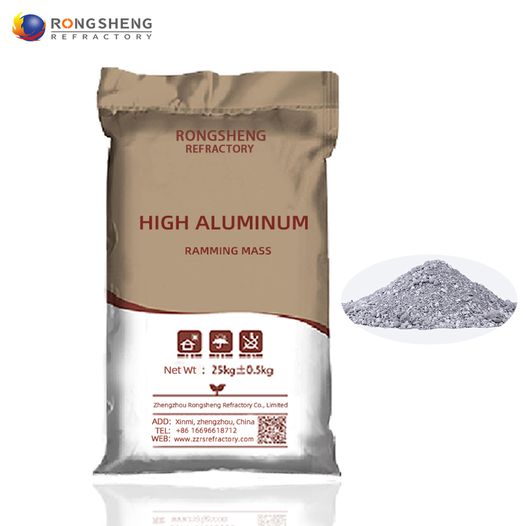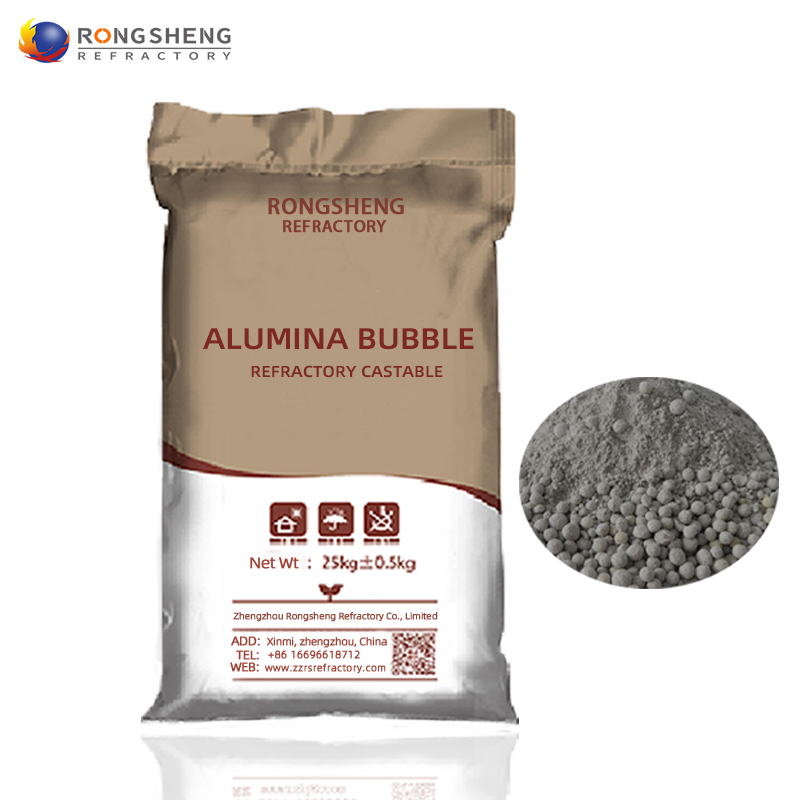Разница между литыми материалами и трамбовочными материалами
Castables and ramming materials are both unshaped refractory materials. Заливочные и трамбовочные материалы изготавливаются из различных заполнителей., порошки, и связующие в разумной пропорции. They are both unshaped refractory materials. Although they are the same type of amorphous refractory materials, they differ greatly.
What are the differences between castables and ramming materials?

Construction methods are different
МАССА МАССА is constructed by ramming and hardened by heating. It is usually formed directly or after adding liquid by pounding (ручной или механический) or vibration and hardens when the temperature is higher than room temperature.
Кастаблы are constructed by pouring and can harden without heating. It is mainly delivered in dry form and is used after mixing with water or other liquids. Обычно, vibration casting, non-vibration (самотекущий) Кастинг, таран, spraying, or tamping when necessary are used to form and harden without heating.
Different material classifications
Ramming materials are classified according to materials: высокий глинозем, глина, magnesite ramming mass, доломит, цирконий, и карбидокремниевоуглеродистые огнеупорные набивочные материалы.
Castables are classified by material: 1. According to porosity distribution, there are two types: dense огнеупорные бетоны and insulating refractory materials with a porosity of not less than 45%; 2. According to binders, they are divided into hydraulic bonding, chemical bonding, and cohesion and combined with refractory castables.

Different applications
Castable is the most widely produced and used unshaped refractory material at present. It is mainly used to construct various heating furnace linings and other integral structures. It is used in heavy-duty furnaces and heating equipment in metallurgy, нефть, химическая индустрия, строительные материалы, электроэнергия, and machinery industry. High-quality shock absorbers are widely used in metallurgy, строительные материалы, и цветные металлы. Smelting, химический, техника, и другие отрасли обрабатывающей промышленности. Products can also be used in smelting furnaces.
Набивной материал представляет собой сыпучий материал из карбида кремния., графит, и электрокальцинированный антрацит в качестве сырья, смешанный с различными ультратонкими порошковыми добавками, and fused cement or composite resin as a binding agent. Применяется для заполнения зазора между оборудованием охлаждения печи и кладкой или наполнителем выравнивающего слоя кладки.. The ramming material has good chemical stability, устойчивость к эрозии, и износостойкость.
 Завод огнеупоров Ронгшэн
Завод огнеупоров Ронгшэн
WeChat
Отсканируйте QR-код с помощью wechat